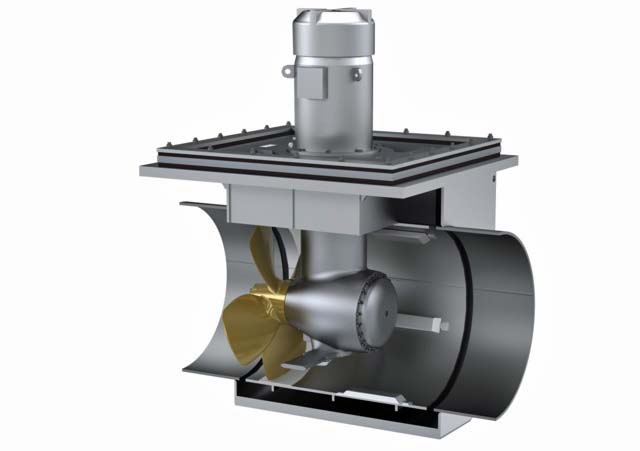German propulsion company Schottel’s transverse thruster (STT) is available with elastic-mounted well installation, which the company says guarantees greater comfort and reduces sound emissions by up to 11dB, as well as helping to minimise underwater noise.
The low-vibration design of the STT is suitable for vessels of all types and sizes, especially for service operation vessels (SOVs) needing maximum comfort and high DP accuracy. In addition to reduced sound generation from the propeller and its surrounding structure, the well installation brings another advantage: since the propulsion unit is not welded to the vessel structure, flexible access to the unit is possible. This facilitates maintenance work and eliminates the need for propulsion-related stays in dry dock. This allows to keep idle times as short as possible and enables higher availability of the vessel. The elastic well installation is available for Schottel TransverseThrusters with a power range of 125kw to 6,500kW.
The survey, wreck-search and research vessel Atair of the BSH – German authority for maritime tasks (Bundesamt für Seeschifffahrt und Hydrographie) – is equipped with Schottel propulsion solutions. In addition to a Schottel PumpJet, the propulsion system of the Silent R-rated Atair includes a Schottel TransverseThruster type STT 170 (200kW) in the stern and a Schottel TransverseThruster type STT 1 (330kW) in the bow. To reduce the noise generation of the STT 1 in the Atair to a minimum, the dynamic behaviour of the transverse thruster was comprehensively analysed and designed to minimise structure-borne noise. Vibration and pressure pulses are further reduced due to a low propeller load and the sound-optimised design of the five propeller blades.



